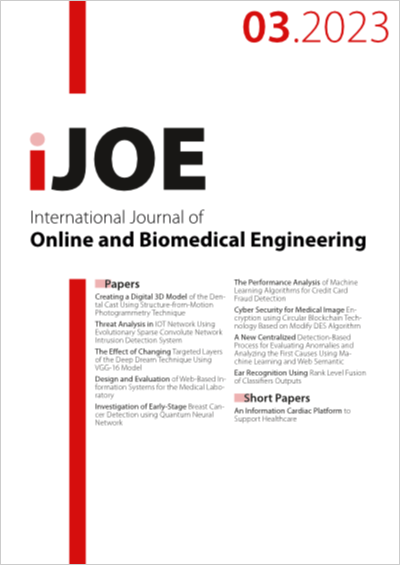Investigation of Early-Stage Breast Cancer Detection using Quantum Neural Network
DOI:
https://doi.org/10.3991/ijoe.v19i03.37573Keywords:
Quantum neural network, Breast cancer, Classical neural network, Machine learning, Mammography.Abstract
aided image diagnostics (CAD) have been used in many fields of diagnostic medicine. It relies heavily on classical computer vision and artificial intelligence. Quantum neural network (QNN) has been introduced by many researchers around the world and presented recently by research corporations such as Microsoft, Google, and IBM. In this paper, the investigation of the validity of using the QNN algorithm for machine-based breast cancer detection was performed. To validate the learnability of the QNN, a series of learnability tests were performed alongside with classical convolutional neural network (CCNN). QNN is built using the Cirq library to perform the assimilation of quantum computation on classical computers. Series of investigations were performed to study the learnability characteristics of QNN and CCNN under the same computational conditions. The comparison was performed for real Mammogram data sets. The investigations showed success in terms of recognizing the data and training. Our work shows better performance of QNN in terms of successfully training and producing a valid model for smaller data set compared to CCNN.
Downloads
Published
How to Cite
Issue
Section
License
Copyright (c) 2023 Amjad Y. Sahib , Muazez Al Ali , Musaddiq Al Ali

This work is licensed under a Creative Commons Attribution 4.0 International License.



